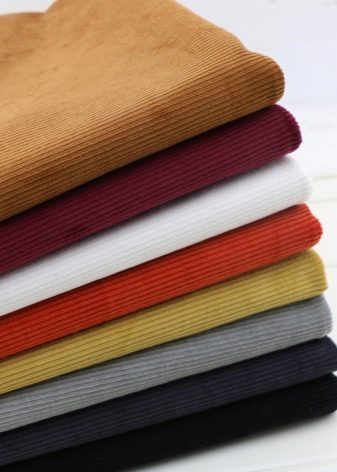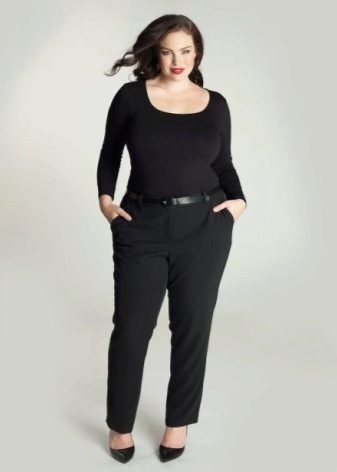Choosing a fabric for trousers
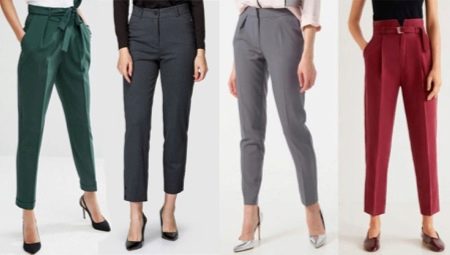
The choice of fabric for trousers depends on the season: in the heat, lightweight materials are preferred, and in winter, on the contrary, you need those that can keep warm well. In addition, it is necessary to take into account the purpose of this wardrobe item: for every day or for special occasions. There are many fabrics from which trousers can be sewn, so you should familiarize yourself with the characteristics of the materials in order to find the best option.
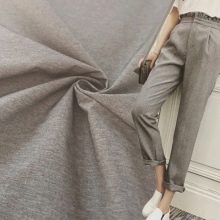
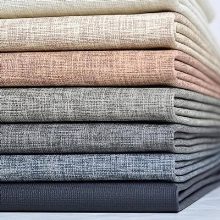
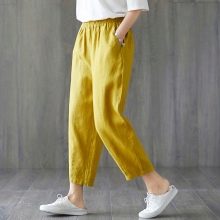
Species overview
There is no strict definition of trouser fabric, as there is a wide variety of models. Classic options with arrows, cargo pants, light summer products: all of this falls under the definition of "trousers". Nevertheless, the main types of fabrics that are most often used for sewing can be distinguished.
- Woolen... The composition is dominated by natural fibers, a small percentage of synthetic fibers are allowed to improve wear resistance. These are fabrics from which warm winter clothes are made, designed for cold weather.
- Stretch... Such materials are distinguished by high elasticity, stretch well, but at the same time they sit on the figure. This effect is achieved with the help of synthetic fibers, therefore, the stretch fabric is either completely artificial in composition, or belongs to blended fabrics.
- Cotton... Natural materials have a breathable structure and absorb moisture well, they are often used for sewing summer clothes. Also, demi-season pants can be made from cotton, if the canvas is dense enough.
- Gabardine... In terms of composition, they can be artificial or natural: from wool, cotton. The peculiarity is the characteristic interweaving of threads, which creates a certain relief.They are durable and dense materials that hold their shape well and keep you warm in cool weather.
- Linen... In terms of properties, they are similar to cotton, most often summer trousers are sewn from such fabrics.
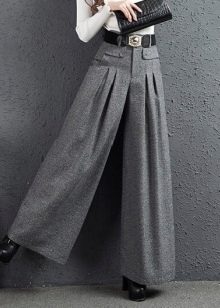
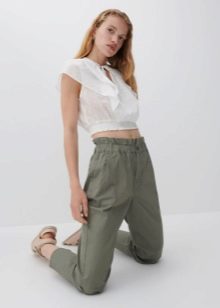
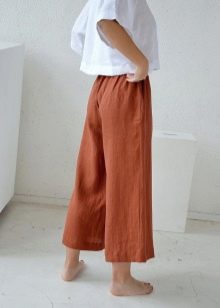
In recent years, wrinkle-free fabric has also been in demand. Products made from it do not need to be ironed, it is enough just to gently dry them after washing. This saves time, which is why many people are looking for fabric that does not wrinkle. Most often these are synthetic materials: polyester, spandex, nylon, lycra. They are abrasion resistant, flexible, inexpensive, but impermeable and can irritate the skin.
In addition, it is considered wrinkle-free very dense wool, but trousers are rarely sewn from it, since the material is too thick.
However, you can choose a thinner version: it will keep its shape and remain crease-resistant, but you still have to iron the items after washing.
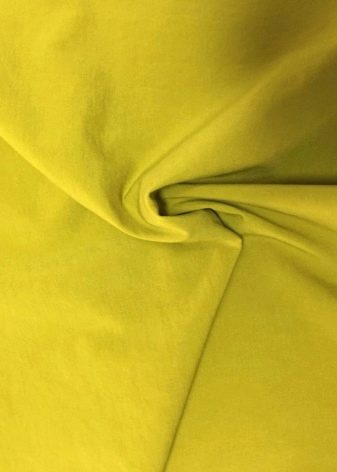
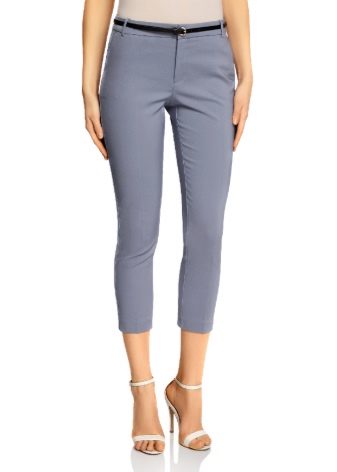
Material selection for output models
Outfits for special occasions are usually judged for their aesthetic qualities. The fabric for the trousers should be beautiful with an interesting texture. The following materials will work.
- Silk... Light flowing trousers are sewn from it for evening events. There is a drawback - it wrinkles easily and is not very practical. However, the clothes look very beautiful due to their pleasant shine. Alternatively, you can use satin: it looks like silk, but costs less.
- Tweed... Suitable for demi-season or winter models, if the celebration falls on a cool season. Expensive tweed fabrics are usually used when sewing classic trousers: men and women.
- Velveteen... The velvety texture gives the products a noble look. Due to its density, it is better suited for demi-season clothing.
- Viscose... This is a versatile fabric from which you can sew models of any style: loose or tight, classic or fashionable chinos, sophisticated options for a celebration or hiking cargo.
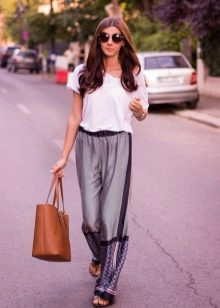

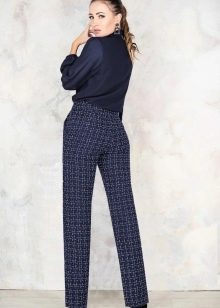
You can pick up other options for evening trousers, the main thing is that the material is of high quality and looks presentable. If you want to sew a thing with a complex cut, then you need to take this into account and select canvases that are easy to process and drape well.
Which fabric to choose for your casual trousers?
Clothes for every day should be practical and comfortable, not hindering movement. In addition, it is important that the fabric is durable, withstands multiple washes, and does not shrink or fade. Also, the requirements depend on the season.
Summer pants should be lightweight, breathable to keep you cool. The best options for sewing are as follows.
- Thin cotton with a small amount of synthetic fibers (no more than 15% in the composition). It is breathable and moisture-absorbing.
- Linen... It should be borne in mind that this is a coarser material with loose edges, so the consumption of fabric will increase.
- Viscose... Although it is produced artificially, the properties of the material are close to those of natural fabrics: cotton and linen.
- Denim... The durable cotton fabric is highly durable.
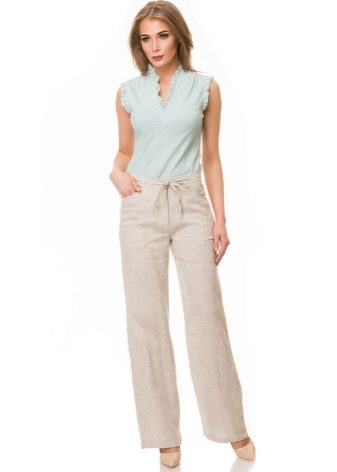
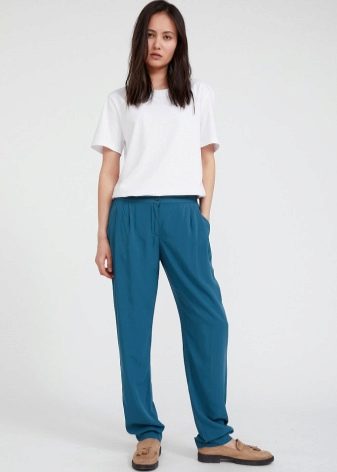
Winter pants need to be warm, so different materials will be needed. Popular woolen fabrics because they provide the best protection from the cold. Can choose gabardine or tweed, jersey, cashmere, velor. If you want to sew home trousers, then it will do flannel... For demi-season women's trousers can be used thick denim, poplin and other types of knitwear.

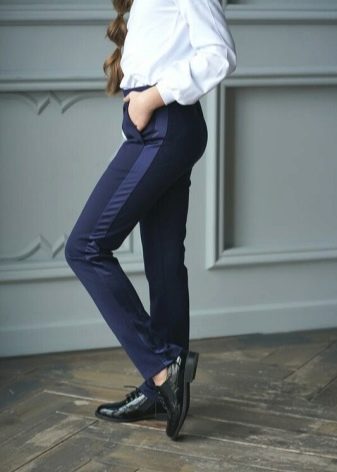
Classic models with arrows should keep their shape well. If you need trousers for a business look, it is better to choose denser fabrics it is also important to ensure that the material does not show through. There are no strict requirements for casual pants for walking around the city. They can be tight-fitting or loose, made of softer and more flowing fabrics.
In this case, it all depends on personal preference.
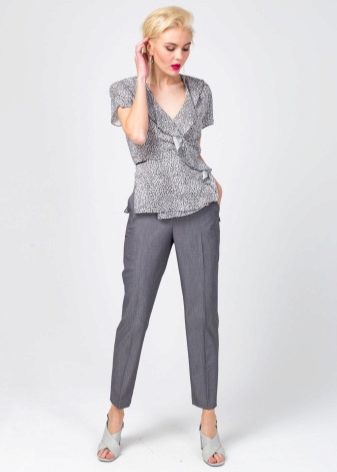
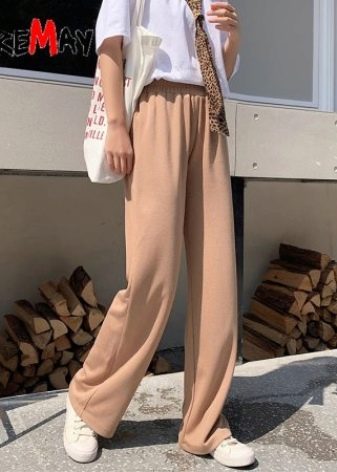
It should also be borne in mind that some fabrics, such as tweed or corduroy, may add a bit of weight. If your goal is to hide problem areas in the thigh area, then it is better to choose other materials. Smooth fabrics without voluminous texture are suitable for full ladies.
An important point - the material should be pleasant to the touch just for you. Since your casual pants will be in constant contact with your skin, it's worth making sure the fabric isn't irritating. Quality trousers are a great addition to any wardrobe.
